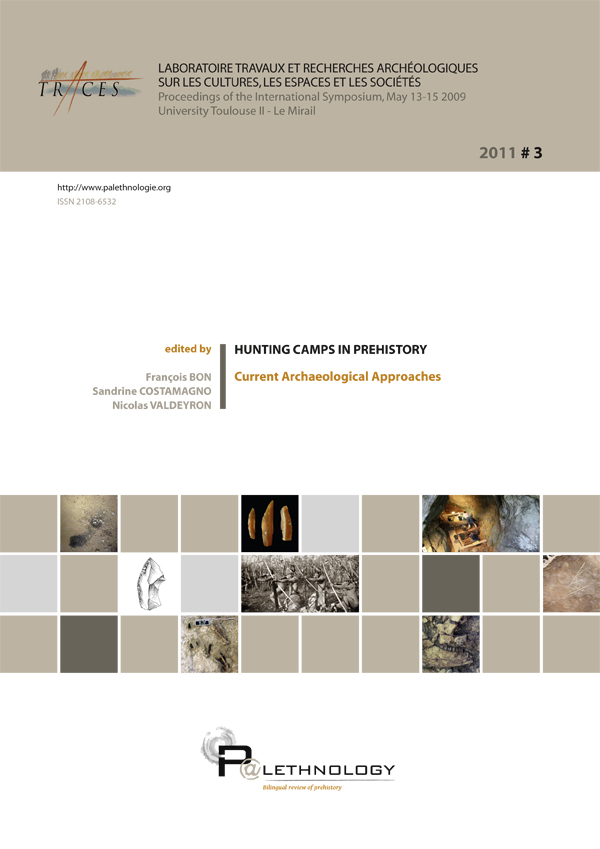CONTENTS
Nicolas VALDEYRON, François BON, Sandrine COSTAMAGNO
Adrian L. BURKE
Dominique LEGOUPIL
Félicie FOUGÈRE
William RENDU, Laurence BOURGUIGNON, Sandrine COSTAMAGNO, Liliane MEIGNEN,
Marie-Cécile SOULIER, Dominique ARMAND, Cédric BEAUVAL, Francine DAVID,
Christophe GRIGGO, Jacques JAUBERT, Bruno MAUREILLE, Seong-Jin PARK
Mousterian Hunting Camps:
Interdisciplinary Approach and Methodological Considerations
Camille DAUJEARD, Marie-Hélène MONCEL, Florent RIVALS, Philippe FERNANDEZ,
Daniele AURELI, Patrick AUGUSTE, Hervé BOCHERENS, Évelyne CRÉGUT-BONNOURE,
Évelyne DEBARD, Marie LIOUVILLE
Christophe GRIGGO, Éric BOËDA, Stéphanie BONILAURI,
Heba AL SAKHEL, Aline EMERY-BARBIER, Marie-Agnès COURTY
A Mousterian Dromedary Hunting Camp:
Level VI1aO at Umm el Tlel (El Kowm, Central Syria)
François BACHELLERIE, François BON, Marianne DESCHAMPS, Laura EIZENBERG,
Dominique HENRY-GAMBIER, Vincent MOURRE, Christian NORMAND, Jacques PELEGRIN,
Jérôme PRIMAULT, René SCANDIUZZI, Céline THIÉBAUT
Grégory BAYLE, Céline BÉMILLI, Nelly CONNET
Aurélien SIMONET
The Diversity of Hunting Camps in the Pyrenean Gravettian
Jorge MARTÍNEZ-MORENO, Rafael MORA TORCAL
Pierre BODU, Monique OLIVE, Boris VALENTIN, Olivier BIGNON, Grégory DEBOUT
Where are the Hunting Camps?
A Discussion based on Lateglacial Sites in the Paris Basin
Marco PERESANI, Rossella DUCHES, Riccardo MIOLO, Matteo ROMANDINI, Sara ZIGGIOTTI
Grégor MARCHAND, Nicolas NAUDINOT, Sylvie PHILIBERT, Sandra SICARD
Hunting for Camps at an Azilian Site in Western
Federica FONTANA
Grégor MARCHAND, Michel LE GOFFIC, Nancy MARCOUX
Nicolas VALDEYRON, Thomas BRIAND, Laurent BOUBY, Auréade HENRY, Rym KHEDHAIER,
Benjamin MARQUEBIELLE, Hélène MARTIN, Anna THIBEAU, Bruno BOSC-ZANARDO
The Mesolithic Site of Les Fieux (Miers, Lot):
a Hunting Camp on the Gramat Karst Plateau?
Marcel OTTE
Freedom of Expression. A Tribute to Free Men

